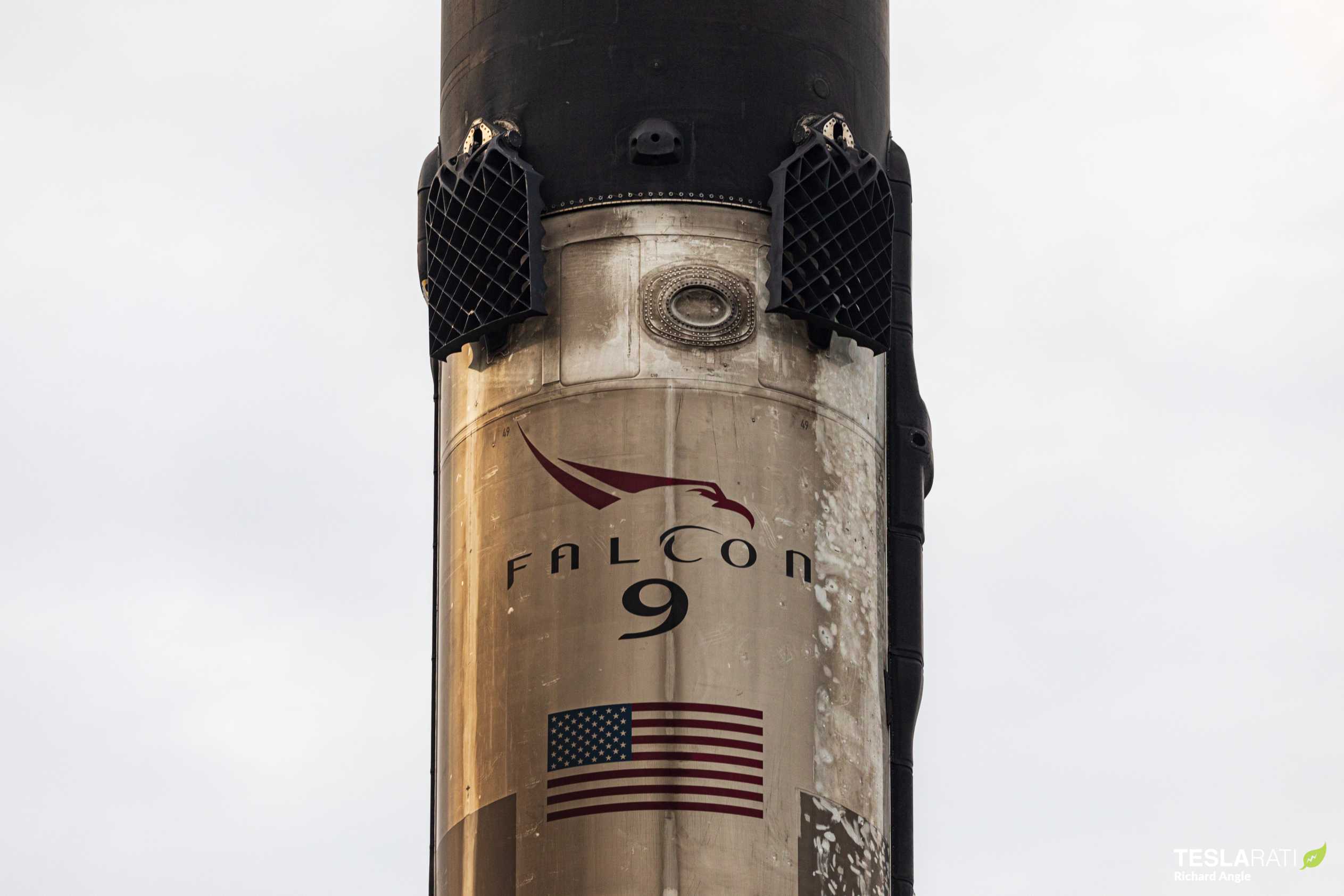
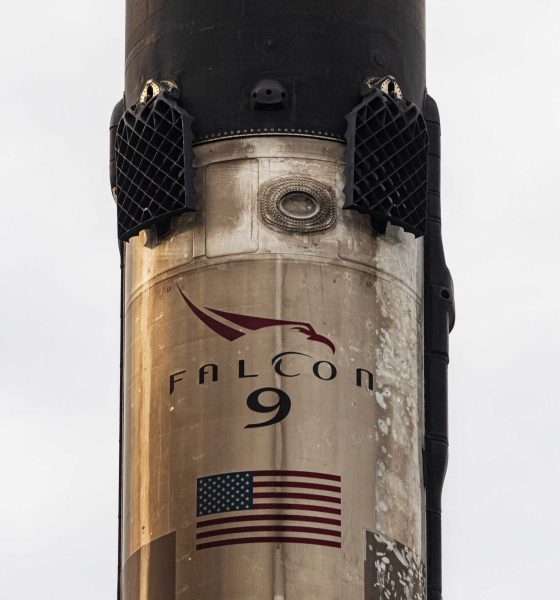
News
SpaceX’s reusable Falcon rockets have Europe thinking two steps ahead
In a rare instance of some connection to reality, a European Union commissioner overseeing the space industry has acknowledged the elephant in the room, admitting that SpaceX has changed the game for commercial rockets and that the upcoming Ariane 6 rocket may already be outdated.
While slight, European Commissioner Thierry Breton expressed some level of urgency, stating that “SpaceX has redefined the standards for launchers.” “Ariane 6 is a necessary step, but not the ultimate aim: we must start thinking now about Ariane 7.” Ariane 6 is a new European Space Agency (ESA) rocket designed to replace the existing Ariane 5 workhorse and do some while cutting costs. However, the vehicle’s design and the strategy behind it were fixed in place before SpaceX began to routinely demonstrate Falcon 9 reusability, effectively creating a rocket optimized for a market that ceased to exist soon after.
Based on the economically infeasible design decision to build a hybrid first stage with a liquid core and add-on solid rocket boosters (SRBs), as well as the structurally inefficient use of hydrogen and liquid oxygen propellant for the booster, Ariane 6 is designed to compete with the likes of the United Launch Alliance’s (ULA) Delta IV, Atlas V, and upcoming Vulcan rockets. Despite several years of halfhearted, half-baked attempts to even consider making parts of Ariane 6 reusable, the rocket will be 100% expendable come its first (and likely last) launches.
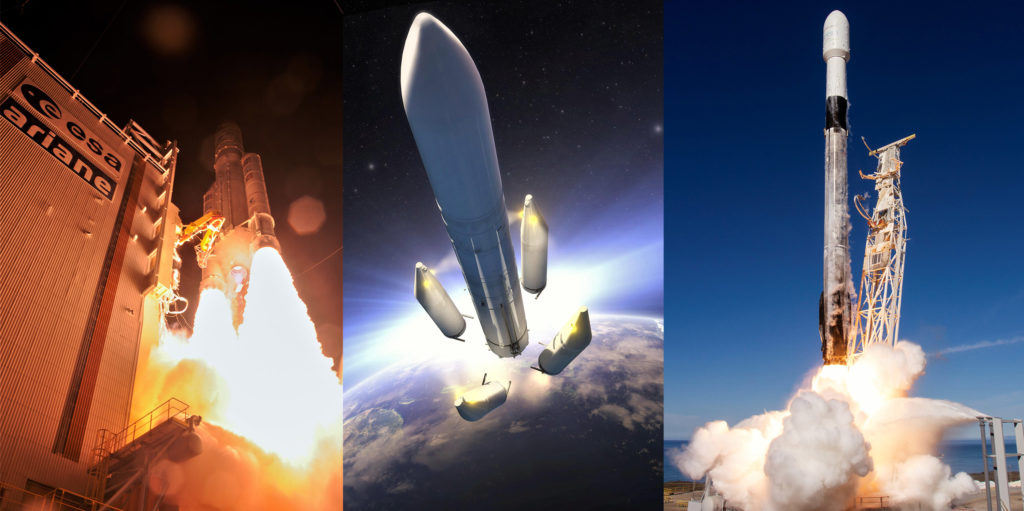
While effectively dead on arrival from a commercially competitive perspective, Ariane 6 is still an impressive rocket. Featuring two variants, the only major difference is the inclusion of either two or four SRBs. A62 is expected to cost roughly $82 million and will be able to launch up to 5000 kg (~11,000 lb) to the geostationary transfer orbit (GTO) commonly used by the communications satellites that are Ariane 5’s bread and butter. Doubling down on solid rocket boosters, A64 will cost at least $135 million apiece and can launch up to 11.5 metric tons (~25,400 lb) to GTO and 5 metric tons to a circular geostationary orbit (GEO).

Compared to SpaceX’s reusable Falcon 9 and Falcon Heavy offerings, Ariane 6 is thus put in a bit of a nightmarish situation. According to the most up-to-date information available, the base price for a commercial orbital launch on a flight-proven Falcon 9 booster may already be as low as $50 million. Even in a recoverable configuration, Falcon 9 easily trounces Ariane 62’s performance and is able to launch more than 16 metric tons to low Earth orbit (A62: 10.3 t) and 5.5 tons (A62: 5 t) to geostationary transfer orbit (GTO), all while costing almost 40% less.
Technically, Ariane 64 is a bit more viable from a performance perspective, but Falcon Heavy can offer almost identical performance to higher orbits and vastly superior performance to lower orbits while still permitting recovery of all three boosters. Cost-wise, Falcon Heavy either meets or beats A64, with existing contracts ranging from $115 to $130 million for extraordinarily high-value NASA and US military payloads. According to SpaceX, the rocket’s base price could be as low as $90 million. Once SpaceX has three operational drone ships on the East Coast, Falcon Heavy can send up to 10 metric tons to GTO while still allowing all three boosters to land at sea. If one of those three boosters is expended, that performance leaps to 16 tons, 40% more than A64.
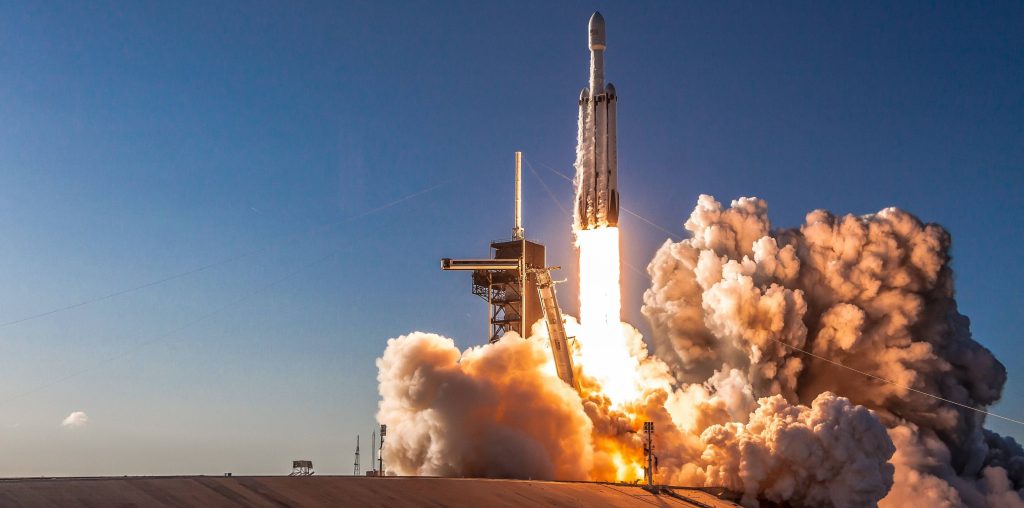
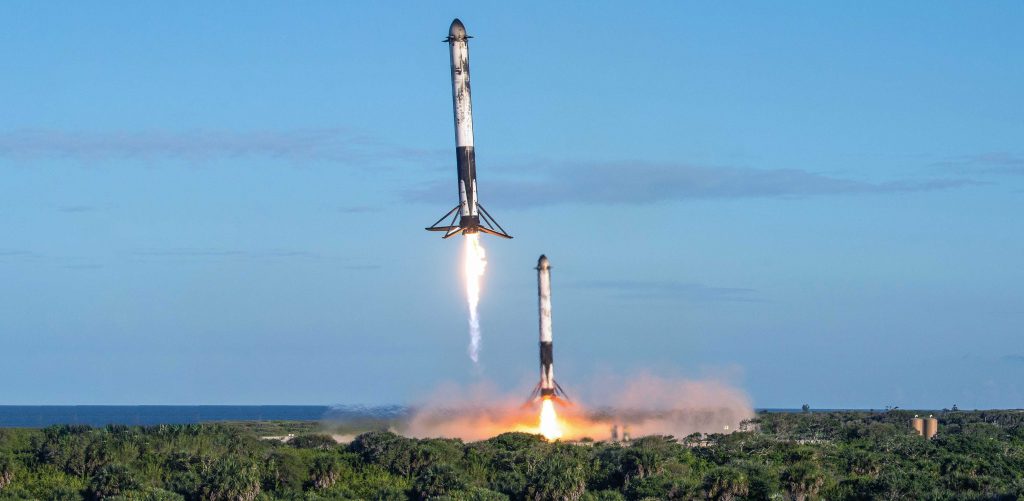
In short, even assuming no improvements between now and Ariane 6’s first several launches in 2021 and 2022, SpaceX’s existing Falcon 9 and Heavy rockets beat Europe’s newest entrant at almost every turn. It should be no surprise, then, that a senior ESA commissioner is already publicly implying that Ariane 6 is outdated before its first launch. As far as “Ariane 7” goes, no official plans exist, although ESA, French space agency (CNES), and Arianespace have tenuous concepts in work that point towards a fully liquid methane-oxygen rocket with a reusable booster.
In theory, a rocket like Themis could launch Europe back into the competitive global launch industry, but ESA’s history of launch vehicle development suggests that such a radical departure from Ariane 5 and Ariane 6 (>$4 billion on its own) would require a huge uptick in funding and 5-10 years of development. With pragmatic supporters like Breton, there is at least some hope, but the outlook is decidedly gray.
Check out Teslarati’s Marketplace! We offer Tesla accessories, including for the Tesla Cybertruck and Tesla Model 3.

News
Tesla Insurance officially expands to new U.S. state
Tesla’s in-house Insurance program first launched back in late 2019, offering a new way to insure the vehicles that was potentially less expensive and could alleviate a lot of the issues people had with claims, as the company could assess and repair the damage itself.
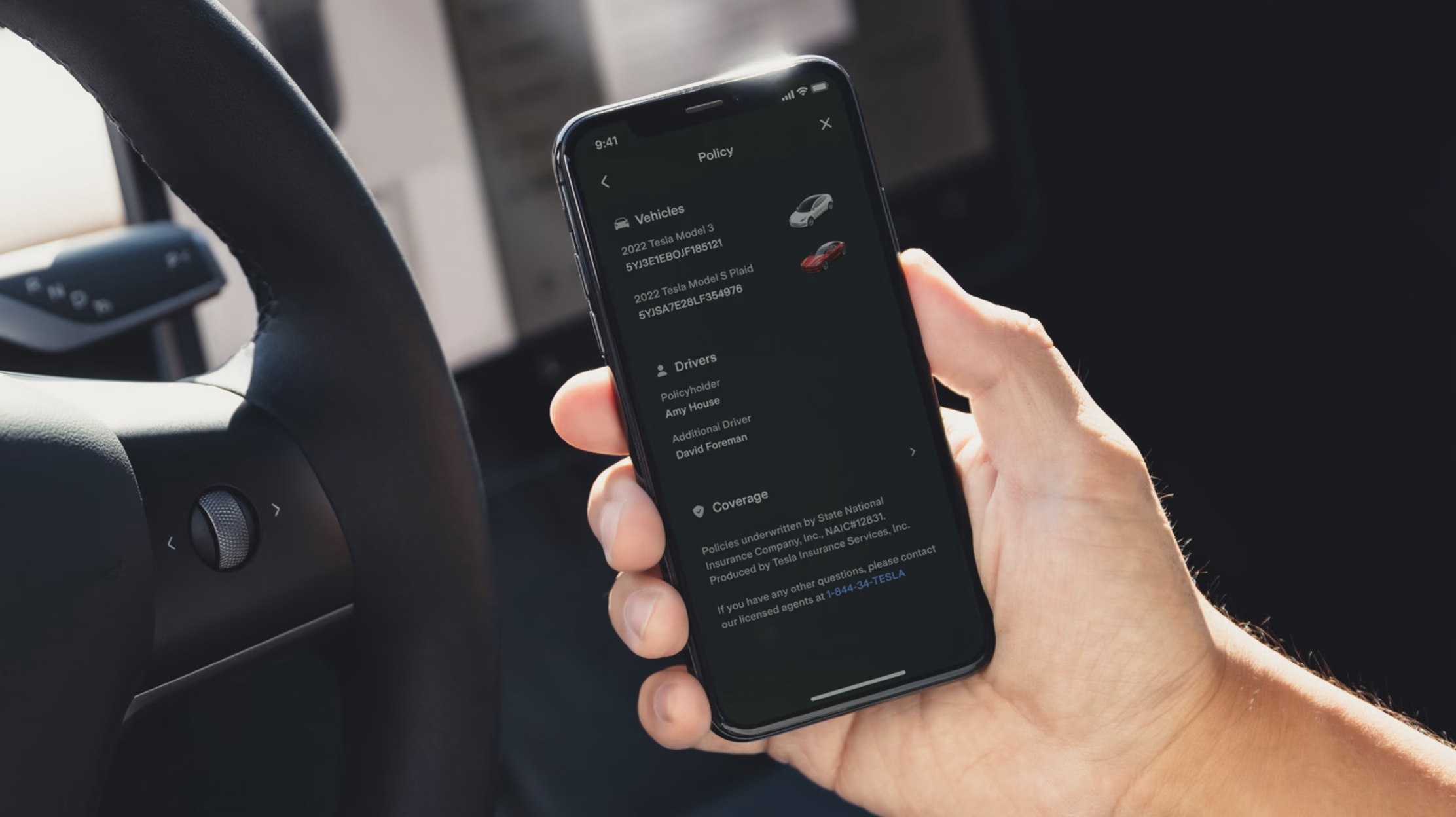
Tesla Insurance has officially expanded to a new U.S. state, its thirteenth since its launch in 2019.
Tesla has confirmed that its in-house Insurance program has officially made its way to Florida, just two months after the company filed to update its Private Passenger Auto program in the state. It had tried to offer its insurance program to drivers in the state back in 2022, but its launch did not happen.
Instead, Tesla refiled the paperwork back in mid-October, which essentially was the move toward initiating the offering this month.
BREAKING: Tesla Insurance has just officially launched in Florida.
This is the first new state to receive @Tesla Insurance in more than 3 years. In total, Tesla insurance is now available in 13 U.S. states (map in thread below of all the states).
Tesla Insurance in Florida uses… pic.twitter.com/bDwh1IV6gD
— Sawyer Merritt (@SawyerMerritt) December 17, 2025
Tesla’s in-house Insurance program first launched back in late 2019, offering a new way to insure the vehicles that was potentially less expensive and could alleviate a lot of the issues people had with claims, as the company could assess and repair the damage itself.
It has expanded to new states since 2019, but Florida presents a particularly interesting challenge for Tesla, as the company’s entry into the state is particularly noteworthy given its unique insurance landscape, characterized by high premiums due to frequent natural disasters, dense traffic, and a no-fault system.
Annual average premiums for Florida drivers hover around $4,000 per year, well above the national average. Tesla’s insurance program could disrupt this, especially for EV enthusiasts. The state’s growing EV adoption, fueled by incentives and infrastructure development, aligns perfectly with Tesla’s ecosystem.
Moreover, there are more ways to have cars repaired, and features like comprehensive coverage for battery damage and roadside assistance tailored to EVs address those common painpoints that owners have.
However, there are some challenges that still remain. Florida’s susceptibility to hurricanes raises questions about how Tesla will handle claims during disasters.
Looking ahead, Tesla’s expansion of its insurance program signals the company’s ambition to continue vertically integrating its services, including coverage of its vehicles. Reducing dependency on third-party insurers only makes things simpler for the company’s automotive division, as well as for its customers.
News
Tesla Full Self-Driving gets sparkling review from South Korean politician
“Having already ridden in an unmanned robotaxi, the novelty wasn’t as strong for me, but it drives just as well as most people do. It already feels like a completed technology, which gives me a lot to think about.”
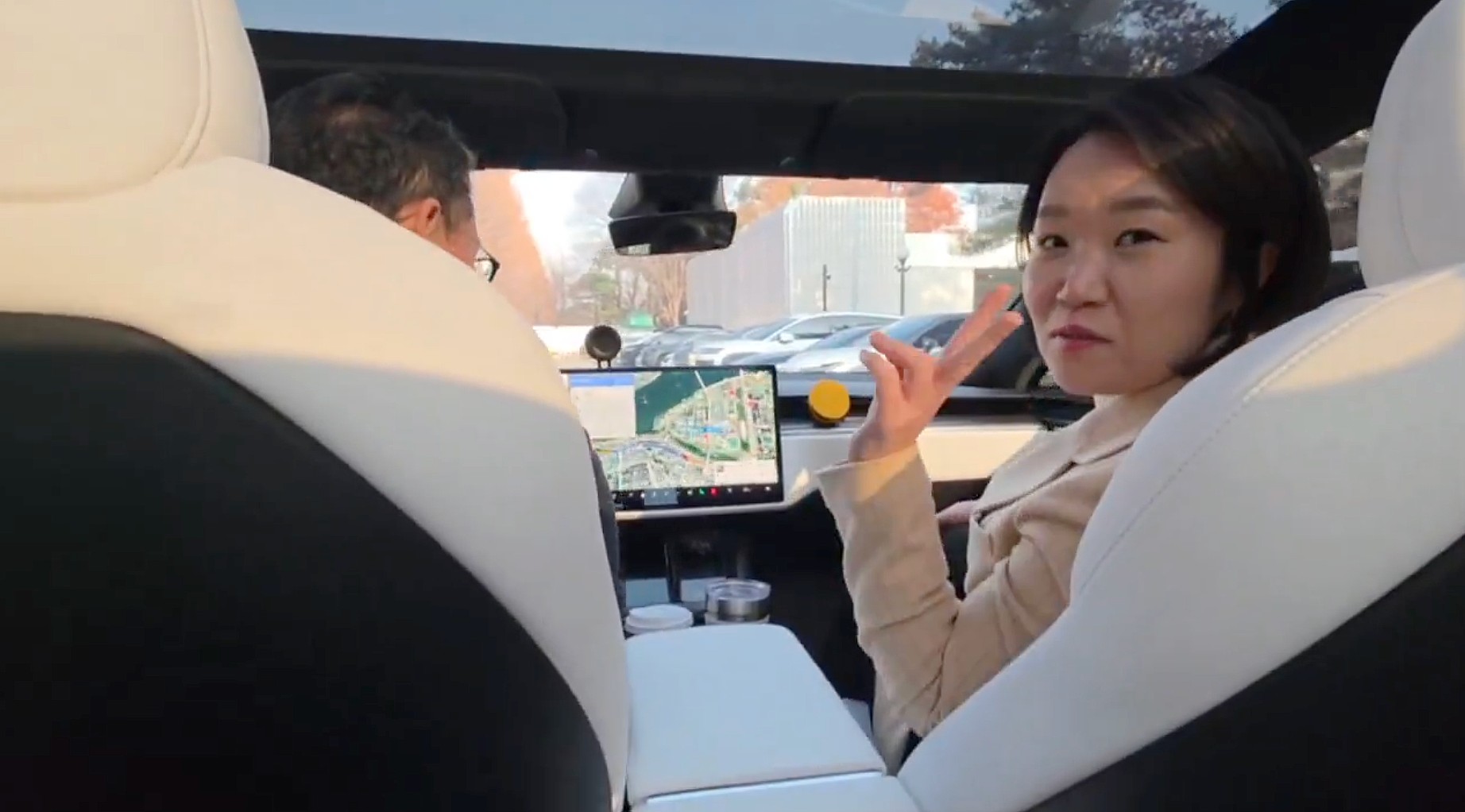
Tesla Full Self-Driving got its first sparkling review from South Korean politician Lee So-young, a member of the country’s National Assembly, earlier this week.
Lee is a member of the Strategy and Finance Committee in South Korea and is a proponent of sustainable technologies and their applications in both residential and commercial settings. For the first time, Lee was able to utilize Tesla’s Full Self-Driving technology as it launched in the country in late November.
Her thoughts on the suite were complimentary to the suite, stating that “it drives just as well as most people do,” and that “it already feels like a completed technology.”
드디어 오늘, 서울에서 테슬라 FSD 체험 했습니다.
JiDal Papa님의 모델S 협찬에 힘입어^^ 파파님 정말 감사합니다.
국회 -> 망원시장 -> 홍익대 -> 국회 복귀 코스였고요.
이미 무인 로보택시를 타봐서 그런지 신기함은
덜했지만, 웬만한 사람만큼 운전을 잘하네요.이미 완성된 기술이라고… pic.twitter.com/8pAidHBpRG
— 이소영 국회의원 (Soyoung Lee) (@im_soyounglee) December 17, 2025
Her translated post says:
“Finally, today I got to experience Tesla FSD in Seoul. Thanks to the Model S sponsored by JiDal Papa^^, I’m truly grateful to Papa. The route was from the National Assembly -> Mangwon Market -> Hongik University -> back to the National Assembly. Having already ridden in an unmanned robotaxi, the novelty wasn’t as strong for me, but it drives just as well as most people do. It already feels like a completed technology, which gives me a lot to think about. Once it actually spreads into widespread use, I feel like our daily lives are going to change a lot. Even I, with my license gathering dust in a drawer, don’t see much reason to learn to drive a manual anymore.”
Tesla Full Self-Driving officially landed in South Korea in late November, with the initial launch being one of Tesla’s most recent, v14.1.4.
It marked the seventh country in which Tesla was able to enable the driver assistance suite, following the United States, Puerto Rico, Canada, China, Mexico, Australia, and New Zealand.
It is important to see politicians and figures in power try new technologies, especially ones that are widely popular in other regions of the world and could potentially revolutionize how people travel globally.
News
Tesla dispels reports of ‘sales suspension’ in California
“This was a “consumer protection” order about the use of the term “Autopilot” in a case where not one single customer came forward to say there’s a problem.
Sales in California will continue uninterrupted.”

Tesla has dispelled reports that it is facing a thirty-day sales suspension in California after the state’s Department of Motor Vehicles (DMV) issued a penalty to the company after a judge ruled it “misled consumers about its driver-assistance technology.”
On Tuesday, Bloomberg reported that the California DMV was planning to adopt the penalty but decided to put it on ice for ninety days, giving Tesla an opportunity to “come into compliance.”
Tesla enters interesting situation with Full Self-Driving in California
Tesla responded to the report on Tuesday evening, after it came out, stating that this was a “consumer protection” order that was brought up over its use of the term “Autopilot.”
The company said “not one single customer came forward to say there’s a problem,” yet a judge and the DMV determined it was, so they want to apply the penalty if Tesla doesn’t oblige.
However, Tesla said that its sales operations in California “will continue uninterrupted.”
It confirmed this in an X post on Tuesday night:
This was a “consumer protection” order about the use of the term “Autopilot” in a case where not one single customer came forward to say there’s a problem.
Sales in California will continue uninterrupted.
— Tesla North America (@tesla_na) December 17, 2025
The report and the decision by the DMV and Judge involved sparked outrage from the Tesla community, who stated that it should do its best to get out of California.
One X post said California “didn’t deserve” what Tesla had done for it in terms of employment, engineering, and innovation.
Tesla has used Autopilot and Full Self-Driving for years, but it did add the term “(Supervised)” to the end of the FSD suite earlier this year, potentially aiming to protect itself from instances like this one.
This is the first primary dispute over the terminology of Full Self-Driving, but it has undergone some scrutiny at the federal level, as some government officials have claimed the suite has “deceptive” naming. Previous Transportation Secretary Pete Buttigieg was vocally critical of the use of the name “Full Self-Driving,” as well as “Autopilot.”








